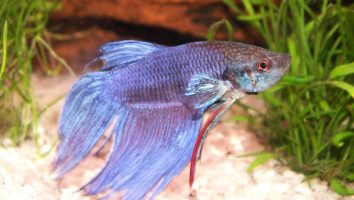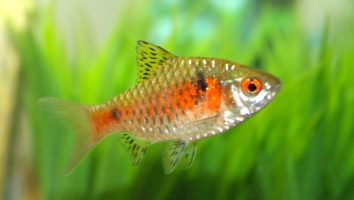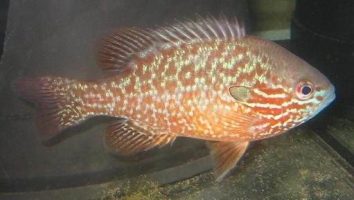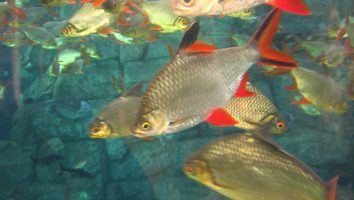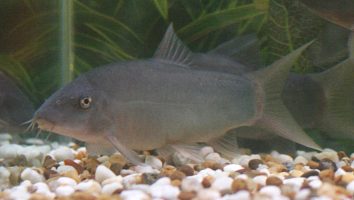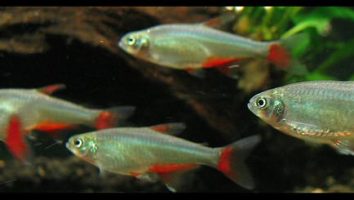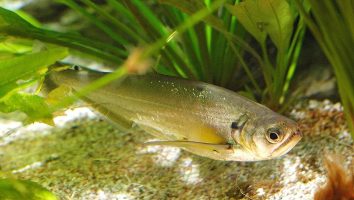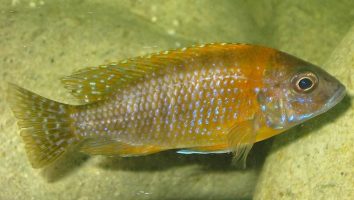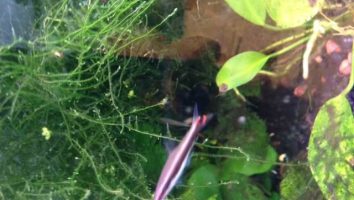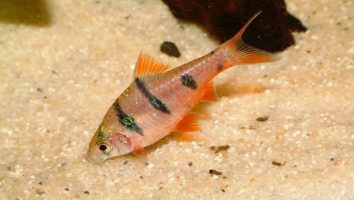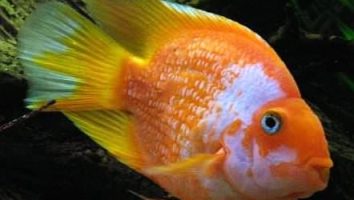Bristlenose plecos are a great addition to any freshwater aquarium. They’re easy to care for, and their unique look adds a lot of personality to your tank.
But there’s a lot of misinformation out there about this fish. We’ve seen so many different suggestions on care and tank mates over the years!
So we made this guide to set the record straight. In it, you’ll learn the correct bristlenose pleco care guidelines (and tips on how to breed them).
Table of contents
Species overview
Bristlenose plecos (Ancistrus spp.) are a type of armored catfish that is native to South America. They can be found in countries like Peru, Brazil, and Colombia.
These plecos are river dwellers and prefer slow-moving waters with a lot of vegetation. This environment is perfect for them because it provides plenty of places to hide and forage for food.
Bristlenose plecos are bottom-dwellers and are mostly herbivorous, although they will occasionally eat small invertebrates.
These fish are popular among aquarium hobbyists because they are relatively easy to care for and are good at keeping algae under control.
Appearance
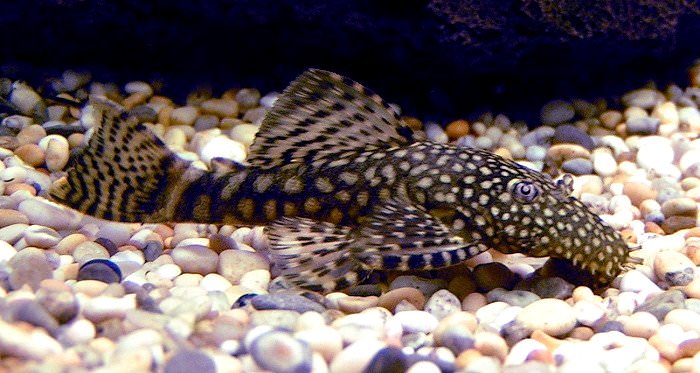
The Bristlenose pleco is a small, bottom-dwelling fish that is easily recognizable by the “bristles” around its nose. These “bristles” are actually modified scales that help the pleco to feel its way around in the dark.
The body of the Bristlenose pleco is brown or greenish-brown in color, with a lighter underside. The body is covered in dark spots or stripes, and the fins are edged in black.
The Bristlenose pleco grows to a maximum length of 6 inches (15 cm).
Lifespan
5-7 years
Size
The average Bristlenose pleco size is about 6 inches, but they can grow up to 12 inches in the wild. These plecos are relatively small compared to other types of plecos, making them a good choice for smaller aquariums.
Tank
Tank Size
Bristlenose plecos can grow to be about 6 inches in length so you’ll need at least a 20-gallon tank if you want to keep one.
If you’re looking to keep a school of bristlenose plecos then you’ll need an even larger tank. We recommend a 40-gallon tank as a minimum for a school of 5 fish.
Water Parameters
Like any fish you plan to keep in captivity, the best course of action is to replicate its natural habitat as closely as possible. That includes water conditions.
Fortunately, that’s pretty easy for the bristlenose pleco. They hail from the Amazon River and surrounding tributaries. Many of the freshwater fish you see in the trade today come from the same area.
It’s all warm water, slight acidity, and plenty of oxygenation.
One nice part of bristlenose pleco care is that this is an adaptable fish. It would be best if you stuck within the preferred parameters below, but you don’t have to be ultra-precise. Plecos typically adjust well, allowing you to focus on the needs of more demanding tank mates.
Here are a few basic water parameters to help create a healthy pleco environment.
- Water temperature: 60 to 80 degrees Fahrenheit
- pH levels: 6.5 to 7.6
- Water hardness: 2 to 12 dGH
- Alkalinity Levels: 4-8 dKH
What To Put In Their Tank
As we’ve said before, Bristlenose plecos are pretty low maintenance when it comes to their living situation.
The inside of their tank can be pretty simple and still look great.
We recommend a substrate of sand or small gravel. These fish like to burrow so a softer substrate is going to be more comfortable for them.
When it comes to plants, anything that can tolerate low to moderate lighting is going to do fine. Java fern, hornwort, and anubias are all great choices.
As for decorations, a couple of pieces of driftwood or some rocks should do the trick. These plecos like to have a few places to hide so don’t go too crazy with the open swimming space.
You can also include a cave or two if you want. These can be store-bought or something you make yourself out of rocks and driftwood. Just make sure there are no sharp edges that can injure your fish.
Common Diseases
The Bristlenose pleco is a pretty hardy fish, but that doesn’t mean they can’t get sick. There are a few diseases that you should be on the lookout for if you own one of these little guys.
The most common disease that affects Bristlenose plecos is hole-in-the-head disease. This is a pretty gruesome looking illness that can be caused by a few different things.
The main cause is usually poor water quality, but it can also be caused by the presence of activated carbon in your tank. This will present itself as one or two pits/holes in the skin of your pleco’s head.
While it’s almost always curable (fixing your water quality and removing activated carbon is usually all you need to do), it will usually leave some scarring on your poor fish!
The other disease you might see in your Bristlenose pleco is ich. This is obviously not a pleco-specific illness, but since ich is so common it’s definitely worth mentioning here.
This will show itself as white spots on the body, fish, and gills of your fish. We won’t do a full ich treatment guide here (there are plenty of those online) but it’s something you need to take very seriously if it affects your pleco.
Behavior & Temperament
Bristlenose plecos are relatively peaceful fish. They are nocturnal, so they will be the most active at night. During the day, they may hide in caves or other places in the tank.
They are bottom-dwellers and like to scavenge for food. They are not aggressive and get along with most other fish.
Tank Mates
Bristlenose plecos are relatively peaceful, which gives you a lot of options for tank mates.
These fish are also fond of hiding, so you don’t need to worry about them getting bullied. In fact, they may even help keep the tank clean by eating algae!
Some compatible tank mates for bristlenose plecos include:
- Guppies
- Platies
- Mollies
- Swordtails
- Neon Tetras
- Cherry Shrimp
- Ghost Shrimp
- Amano Shrimp
- Otocinclus Catfish
*Kuhli Loaches
Breeding
Bristlenose plecos are one of the easiest species of plecos to breed in captivity. They’re also one of the most popular plecos among aquarists.
There are a few things you need to do to set up a breeding tank. First, you need to make sure the tank is at least 30 gallons. Then, you need to add a lot of hiding places. This can be in the form of driftwood, caves, or anything else that plecos can hide in.
Next, you need to make sure the filters are fry-safe. Use sponges on any inlets to ensure that none of the hatched babies get sucked into the filter!
When ready, add two females for every male. Remember: Males have the more pronounced bristle appendages.
Feed the fish plenty of high-quality foods. Then, begin changing about 50 percent of the water. That should trigger spawning.
You’ll know you’re successful when you see the female deposit eggs on the driftwood. After she does that, the male will guard them diligently.
The eggs will hatch in about 10 days. You can move the babies into a nursery tank to improve their odds of survival. Feed them mashed peas and other green vegetables until they’re ready to join the adults in your main tank.
Conclusion
The bristlenose pleco is an excellent addition to any freshwater aquarium. They are hardy, peaceful, and relatively low-maintenance, making them a great choice for beginner aquarists.
While they are not the most exciting fish to watch, they perform an important function in the aquarium by helping to keep the tank clean.
If you are looking for a pleco that is easy to care for and won’t max out your budget, the bristlenose pleco is a great choice.

